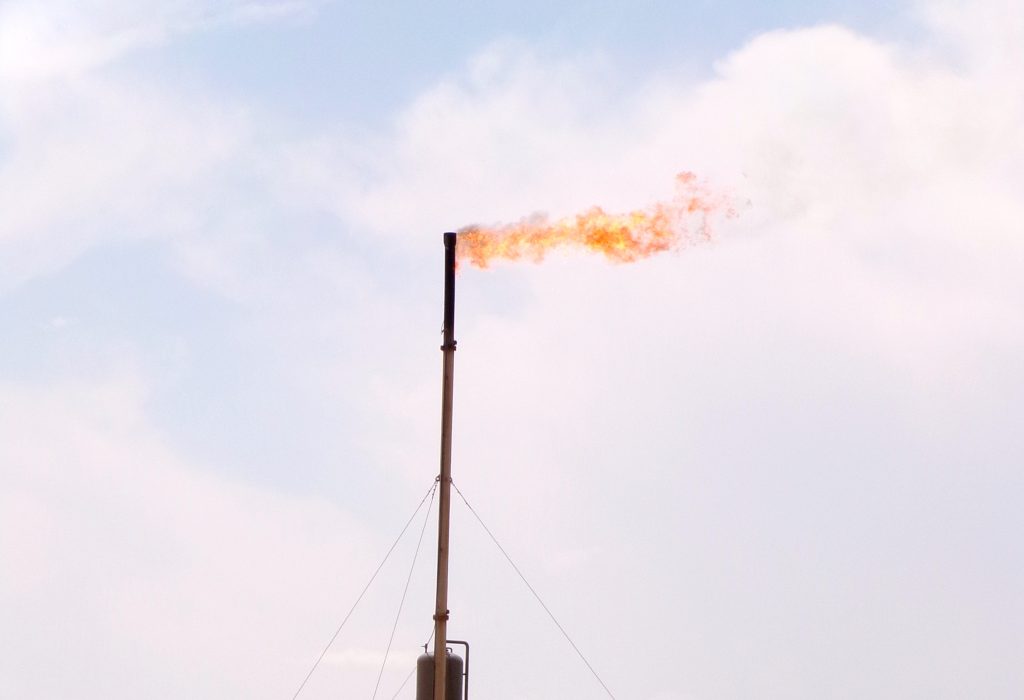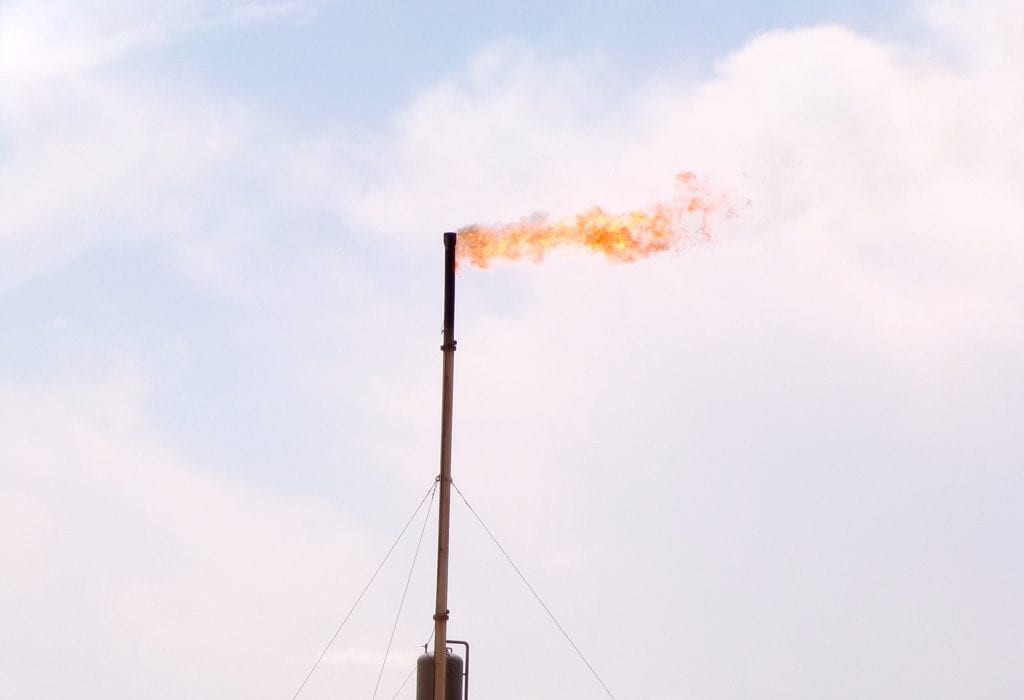
While New Mexico Governor Michelle Lujan Grisham supports bold climate action, her focus on methane and her seeming unwillingness so far to tackle the oil and gas industry’s full greenhouse gas footprint threatens to derail any and all success in reducing carbon emissions.
This climate blindspot has been highlighted before. While the Governor has trumpeted policies to curtail carbon and promote renewable energy, advocates have pointed out that New Mexico’s surge in oil and gas production–and the greenhouse gases resulting from the consumption of these fossil fuels–ultimately stands to erase all gains for the climate.
With New Mexico facing record levels of oil production and soaring rates of natural gas production, this blindspot stands to seriously hobble the state’s climate progress.

New Mexico Governor Michelle Lujan Grisham
Cutting Methane Won’t Cut It
To date, Michelle Lujan Grisham’s solutions have focused on targeting only production-related emissions, and even then only methane. Earlier this year, she signed an Executive Order calling for rules to limit methane.
True to form, last week the state kicked off a stakeholder process to start drafting these rules, although the timing of their development and implementation is completely up in the air.
It’s well-meaning. After all, methane is a potent greenhouse gas with up to 86 times the heat-trapping capability of carbon dioxide.
Unfortunately, the reality is that reducing methane emissions from oil and gas production in New Mexico will make absolutely no difference for the climate.
Let me say that again just so you know exactly where WildEarth Guardians stands:
REDUCING METHANE EMISSIONS FROM OIL AND GAS IN NEW MEXICO WILL MAKE ABSOLUTELY NO DIFFERENCE FOR THE CLIMATE.
That’s because what really matters are the end-use carbon emissions related to production. In other words, it’s the ultimate processing and burning of oil and gas, i.e., the consumption, that matters, not methane. The numbers confirm this, and then some.
We calculated total carbon associated with oil and gas produced in New Mexico in 2018. Its off the charts. Using end-use emission factors developed by the U.S. Environmental Protection Agency, we estimated that production led to the release of more than 189 million metric tons of carbon dioxide.
According to the Environmental Protection Agency’s greenhouse gas equivalencies calculator, 189 million metric tons of carbon equals the amount released by 48.5 coal-fired power plants in a single year.
This figure was calculated using New Mexico Oil Conservation Division oil and gas production data, then multiplying this by the Environmental Protection Agency’s factors of 0.43 metric tons of carbon dioxide for every barrel of oil produced and 0.0551 metric tons of carbon dioxide for every thousand cubic feet (Mcf) of natural gas produced.
The chart below sums it up. Without a doubt, oil and gas production in New Mexico leads to a massive carbon footprint. And this is just for 2018!
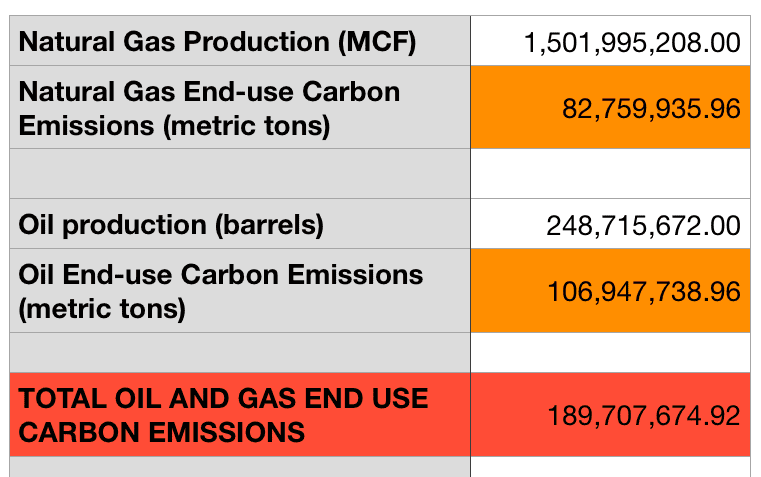
New Mexico Oil and Gas Production in 2018 and End-Use Carbon Dioxide Emissions
No Comparison
To put this into perspective, we compared emissions most recently reported by the Environmental Protection Agency for New Mexico. There’s truly no comparison.
While end-use carbon emissions related to oil and gas production amounted to more than 189 million metric tons, total methane emissions from production amounted to, at most, a little more 629,000 metric tons of carbon dioxide equivalent.
[NOTE: The Environmental Protection Agency reported 182,946 metric tons of carbon equivalent for methane from oil and gas production, but this figure is based on an assumption that the gas is only 25 times more potent than carbon dioxide. Using the more recent finding that methane is actually 86 times more potent, total emissions are closer to 629,000 metric tons of carbon dioxide equivalent.]
This means that methane emissions from oil and gas represent 0.3% of the industry’s total climate footprint.
Importantly, most recent reports indicate that coal and natural gas-fired power plants in New Mexico emitted a total of only 24,000,000 metric tons of carbon.
That means oil and gas production in New Mexico was ultimately responsible for nearly 10 times as much carbon pollution as the state’s power plants.
As the chart below shows, carbon emissions resulting from the consumption of oil and gas in New Mexico dwarf oil and gas industry methane emissions and power plant carbon emissions. Methane emissions barely register on this chart (we had to cut the end-use carbon emissions bar down just so methane emissions could barely register).
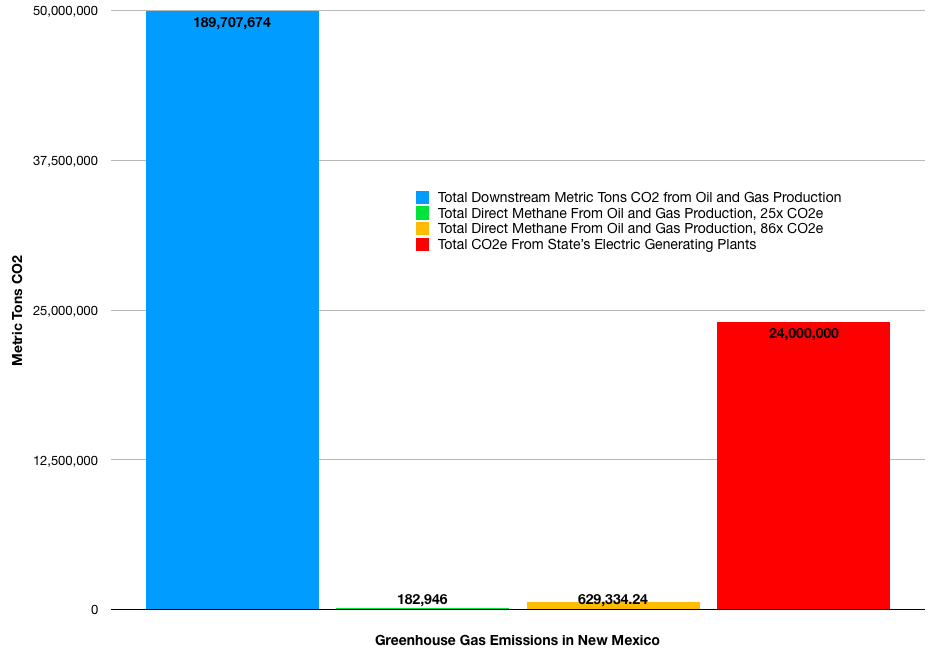
A Burning Disaster
Put another way, even if New Mexico went 100% renewable and even if the state completely zeroed out oil and gas industry methane emissions, the state would still be the source of as much carbon pollution as nearly 50 coal-fired power plants.
With oil and gas production on the rise in the state, this underscores that cutting methane emissions won’t lead to any meaningful climate progress.
In fact, major drillers in New Mexico, including the notorious companies Chevron and Exxon, have indicated they intend to ramp up production to nearly two million barrels of oil per day in the Permian Basin of southeast New Mexico and west Texas.
And what are these companies doing to reduce their methane emissions in the meantime? Burning through flaring. In fact, reports indicate more flaring is happening in New Mexico than ever before.
This just underscores the absurdity of focusing on methane as any kind of a climate solution.
Because while burning methane turns the gas to carbon dioxide and reduces its heat trapping capacity, it still has a climate impact. With flaring ramping up in New Mexico, it highlights that reducing methane emissions is simply shifting the problem and not actually solving it.
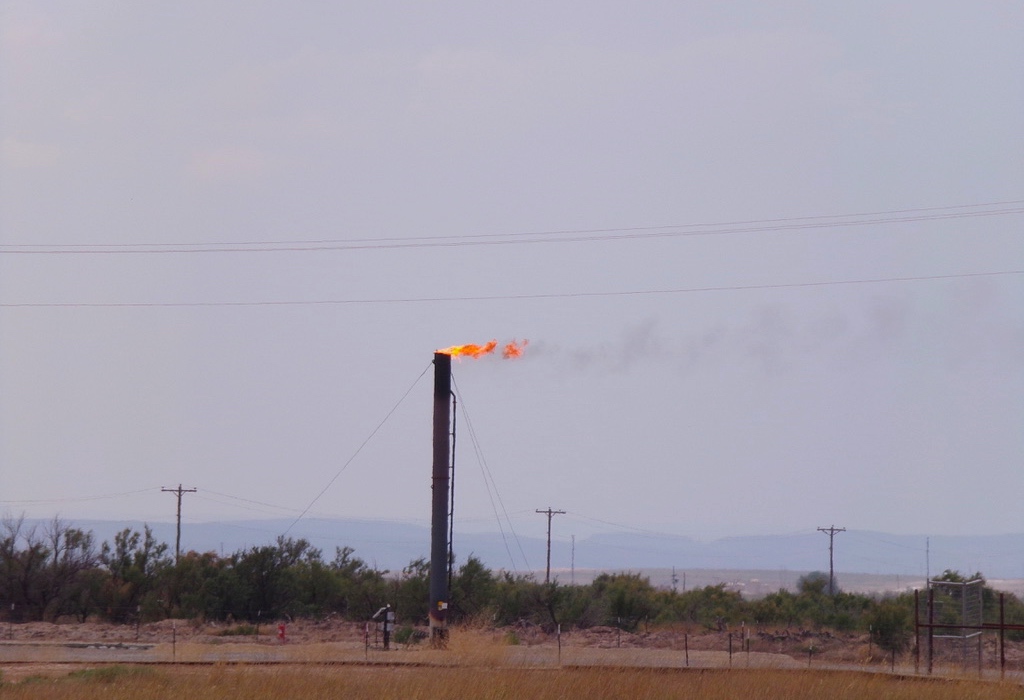
Flaring at oil and gas well site in southeast New Mexico
Keep it in the Ground
New Mexico Governor Michelle Lujan Grisham talks the talk on climate, but talk is cheap. If she doesn’t get serious about confronting the full carbon footprint of the oil and gas industry, her climate blindspot, then it’s clear that she’s not willing to walk the walk.
If that’s the case, she may as well be in climate denial.
“This is a state that is not in climate denial. We are clear that we have basically a decade to begin to turn things around and New Mexico needs [to] and will do its part.”
– New Mexico Governor Michelle Lujan Grisham
New Mexico and New Mexicans need real climate action, not rhetoric, not empty messaging, and certainly not empirically baseless solutions that actually promote more oil and gas production and consumption.
In this case, the solution is clear: New Mexico needs to start clamping down on new oil and gas development and get on track to ultimately keep fossil fuels in the ground.
While this seems extreme, in truth, it’s the most common sense and reasonable solution at hand. After all, the climate crisis is already ravaging New Mexico and portends even more harms to the state’s water supplies, public health, clean air, infrastructure, and ecosystems.
Although the booming oil and gas industry may generate revenue today, our planet–and particularly the State of New Mexico–will be paying a heavy cost tomorrow.
If New Mexico’s Governor continues to coddle the oil and gas industry and deny the true costs of the climate crisis, then she will fail miserably in delivering on any meaningful climate progress.
For a safe, healthy climate and for real economic prosperity, it’s time for Michelle Lujan Grisham to mind her climate blindspot and acknowledge the need to start keeping fossil fuels in the ground.
